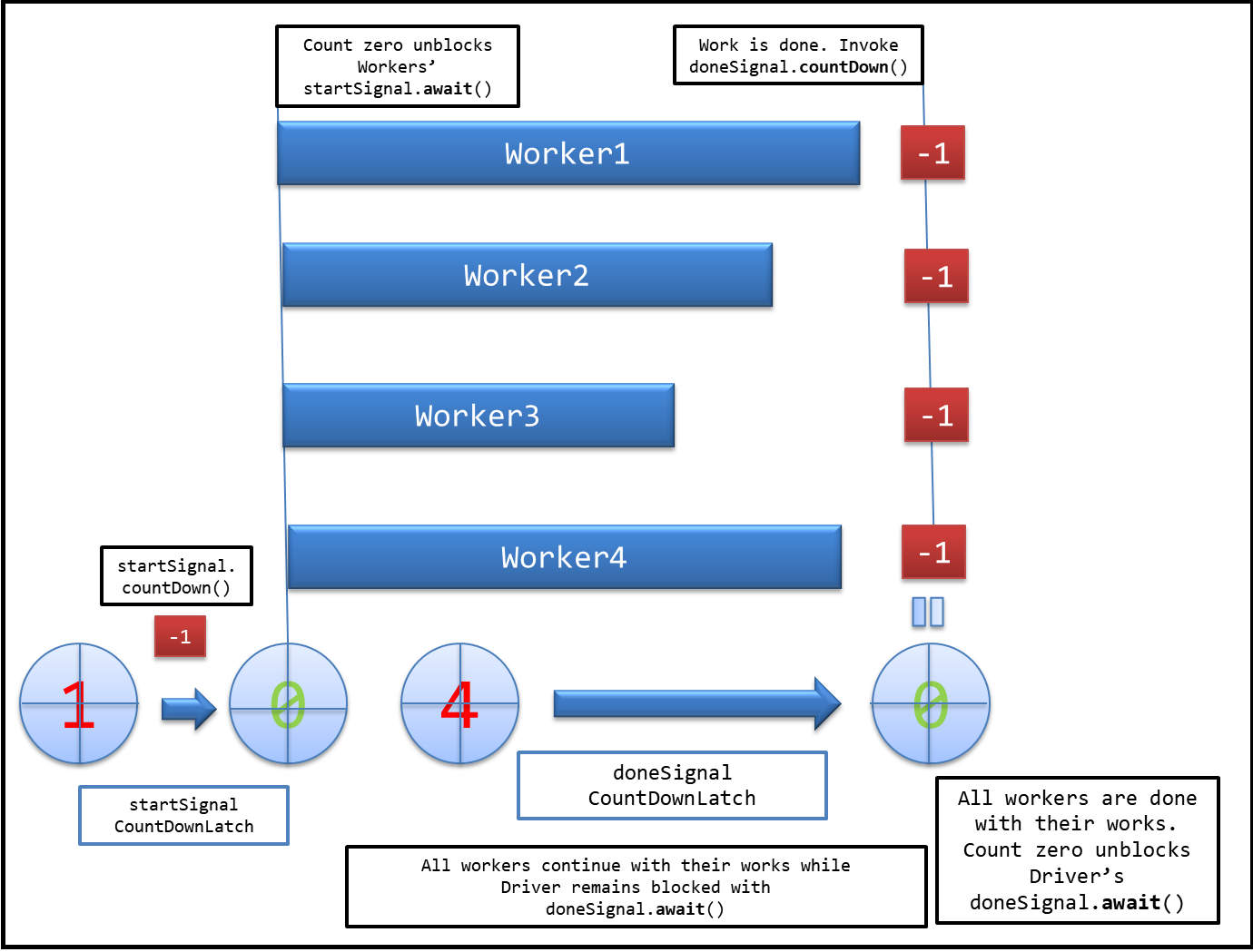Can someone help me to understand what Java CountDownLatch is and when to use it?
I don't have a very clear idea of how this program works. As I understand all three threads start at once and each Thread will call CountDownLatch after 3000ms. So count down will decrement one by one. After latch becomes zero the program prints "Completed". Maybe the way I understood is incorrect.
import java.util.concurrent.CountDownLatch;
import java.util.concurrent.ExecutorService;
import java.util.concurrent.Executors;
class Processor implements Runnable {
private CountDownLatch latch;
public Processor(CountDownLatch latch) {
this.latch = latch;
}
public void run() {
System.out.println("Started.");
try {
Thread.sleep(3000);
} catch (InterruptedException e) {
e.printStackTrace();
}
latch.countDown();
}
}
// -----------------------------------------------------
public class App {
public static void main(String[] args) {
CountDownLatch latch = new CountDownLatch(3); // coundown from 3 to 0
ExecutorService executor = Executors.newFixedThreadPool(3); // 3 Threads in pool
for(int i=0; i < 3; i++) {
executor.submit(new Processor(latch)); // ref to latch. each time call new Processes latch will count down by 1
}
try {
latch.await(); // wait until latch counted down to 0
} catch (InterruptedException e) {
e.printStackTrace();
}
System.out.println("Completed.");
}
}

